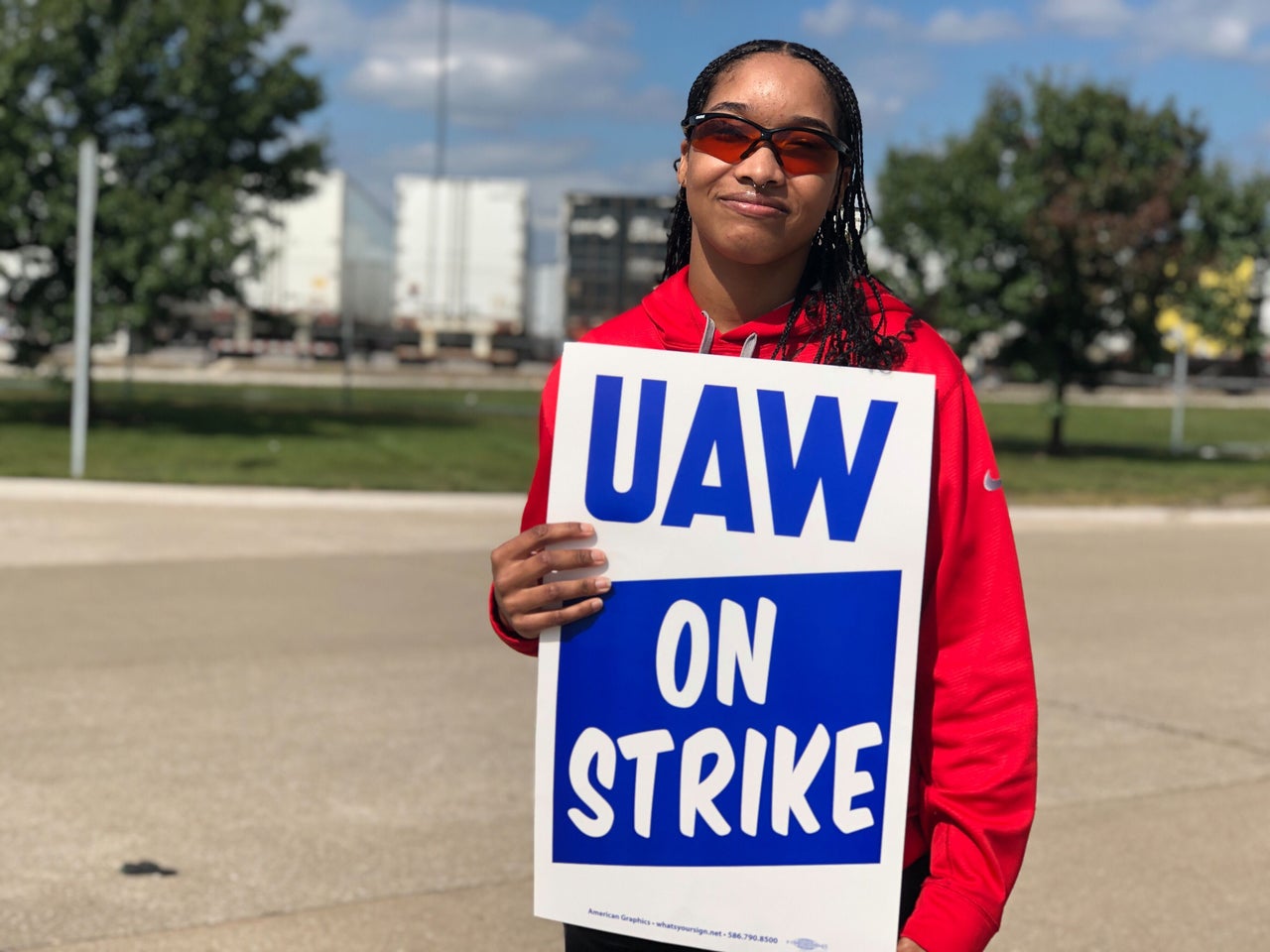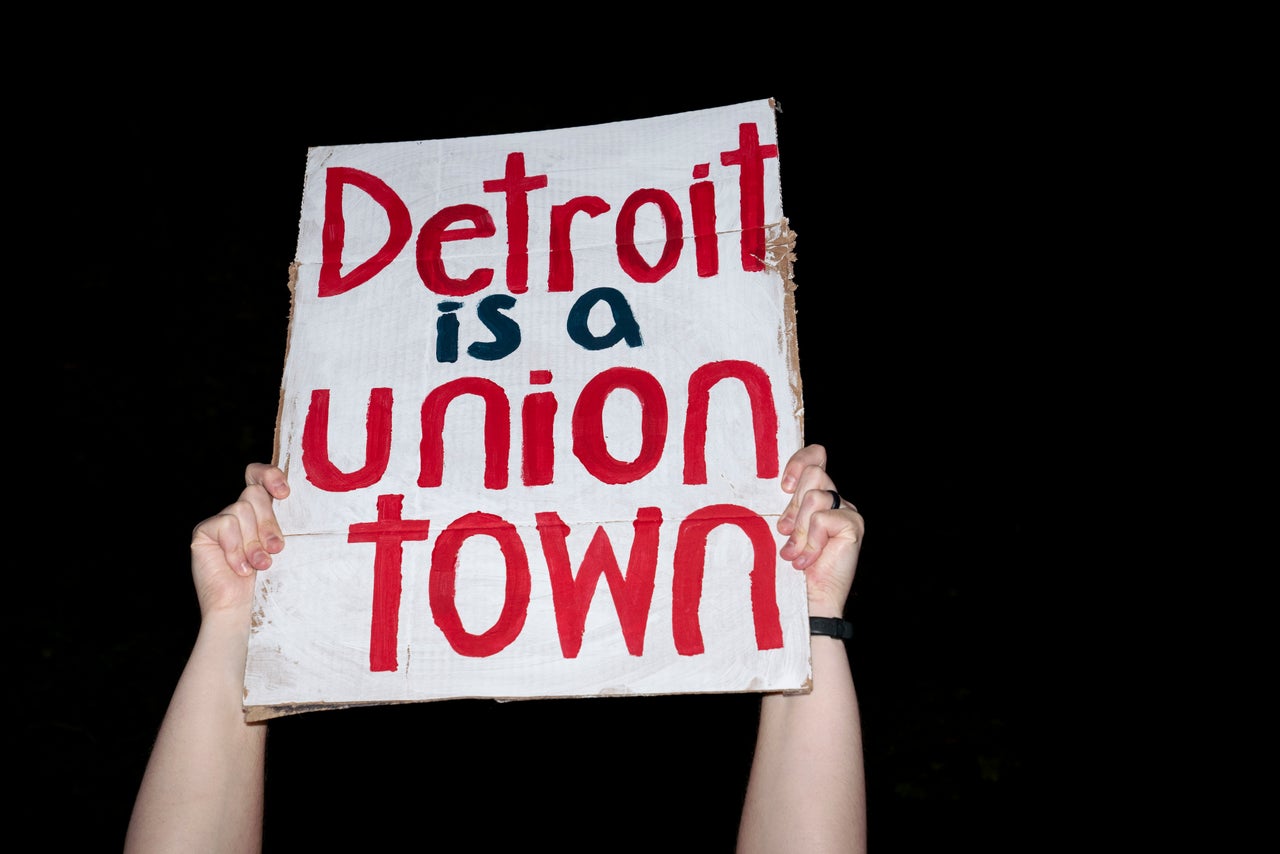
DETROIT, Mich. and TOLEDO, Ohio — Whether they are brand-new temps or 25-year veterans, the auto workers battling the “Big 3” in an unprecedented strike say they are fighting to restore their jobs to the gold-standard working-class careers they were in previous generations.
Wages in the auto industry writ large have dropped nearly 20% since 2008 when adjusted for inflation. Now Ford, General Motors and Jeep parent company Stellantis are facing their first simultaneous strike ever in the United Auto Workers’ 88-year history.
As their union leadership bargains new four-year contracts, workers say they are determined to claw back earlier concessions that lowered payscales for new workers and sacrificed hard-won standards enjoyed by their parents and grandparents, including defined-benefit pension plans.
“We gave up a lot,” said Kenyon Reed, who works in the paint shop at GM’s Factory ZERO, which produces the electric Hummer SUV and electric Silverado pickup. “I feel like they owe me.”
Reed attended a rally in downtown Detroit on Friday where he held a weathered UAW strike sign, the same one he waved on the picket line during the union’s six-week strike against GM in 2019. Factory ZERO workers have not walked out — the “targeted” strikes have only hit one facility apiece for each of the Big 3 so far — but Reed said he’s ready to heed his union’s call if the work stoppage expands.
The 12-year GM employee described his union’s last two agreements with the company, in 2015 and 2019, as “bullshit contracts.”
“This one right here, they’ve got to make me whole,” Reed said.
Working in a Midwest plant producing autos has long been seen as a pathway to the middle class, due to the UAW’s organizing that began under longtime leader Walter Reuther in the 1930s. The standards set by the union enabled someone with or without a college degree to sustain a family on a single income and look forward to reasonable financial security in retirement.
But the job is not what it used to be, thanks to the market growth of foreign-based automakers like Toyota and Honda, paired with givebacks the UAW made to help stabilize the Big 3 in the wake of the financial crisis of 2007 and 2008. That included the creation of a “tiered” system in which new hires spend eight years progressing to the top pay rate, the elimination of cost-of-living increases to mitigate inflation and a shift away from pensions to 401(k) plans.
The Economic Policy Institute think tank says that declined real wages among UAW workforces has had a “spillover effect” in the broader auto manufacturing sector, helping suppress pay at non-union, foreign-owned competitors as well.
Chanelle Hardy, 18, is on strike at the Jeep assembly plant in Toledo. Her father, her aunt, her great uncle and her great aunt also worked in the industry. She said many of her older relatives were surprised to learn her starting wage was just $15.78 per hour as a “supplemental employee,” or temp, at Stellantis.
“Growing up, Jeep was like a good job…Get a job at Jeep and you’re set for life,” said Hardy, who works the first shift and starts at 5:30 a.m. “But I turned 18, I came to Jeep and I was making $15. So it’s not the Jeep I thought it was.”
Higher wages lie ahead for Hardy if she sticks around: The current top rate at the plant is $31.77. But it would currently take eight years to reach that pay — after she converts to a full-time employee. (In contract talks, the Big 3 have all offered to cut that timeline to four years.) She said it’s understandable why her old high school classmates aren’t jostling for jobs at the plant.
“I have friends at Chick-fil-A making $17,” she said.

Montrice Mahan, another temp at the Jeep plant, said the quality of the contract they secure will probably determine whether he sticks around. He said he earns $16.77 per hour and his schedule fluctuates unpredictably.
“If the contract doesn’t change, then I’m going to leave,” said Mahan, 25, who works on electrical harnesses. “It’s not worth it. I could go to Taco Bell…and make $17.”
It can be notoriously difficult for a union to win back something it conceded in an earlier negotiation. After all, the employer always has a reason why things can’t go back to the way they were. The Big 3 have said the union’s demands to substantially raise pay and bring back inflation adjustments and pensions would make labor costs unsustainable and obstruct their pivot to electric vehicles.
But workers point to all the money the Big 3 have raked in under recent contracts, including a 92% increase in profits between 2013 and 2022, for a total of $250 billion, according to EPI.
“We’re just trying to get back to where we were,” said Harmon, a 48-year-old striking Ford worker who asked to withhold his last name. “We struggled to keep that blue oval sign up. We made those concessions. Now they’re making record profits. All we want is a fair deal.”
Even though he wouldn’t benefit personally from the elimination of tiers, the 30-year veteran mentioned it first as he rattled off his concerns for the contract.
“I want these young kids to have a better life. This went on for way too long,” he said.

That kind of talk extends to the very top of the union, where the UAW’s new president, Shawn Fain, has delivered impassioned speeches framing the strike as a broader battle for middle-class jobs. Fain has discarded the union’s old strategy of negotiating a contract with one of the Big 3 then trying to pattern the other contracts off that one. Instead, he and other leaders have chosen to bargain — and strike — all three at the same time.
Negotiations between the UAW and the three companies have continued since the strikes began Friday, but the two sides remain apart on key issues, including raises. Fain said on “Face the Nation” Sunday that the union was prepared to “amp this thing up even more” and strike at additional facilities if the companies don’t improve their offers.
Reed, the GM worker, said he is thrilled with the union’s militant stance. He got off work one day in July and as he left the plant, he was stopped by Fain himself. Rather than kick off negotiations by shaking hands with the Big 3’s chief executives, as was UAW custom, Fain decided instead to do a “member handshake” at a few plants to symbolize a new direction. That’s how Reed met his union’s leader.
At first Reed wasn’t sure about the strategy to strike only selected plants rather than all at once, but the playbook has grown on him because it leaves room to escalate. He said he believes Fain is playing “chess, not checkers.”
“It’s really making the whole world pay attention,” he said.


Be the first to comment